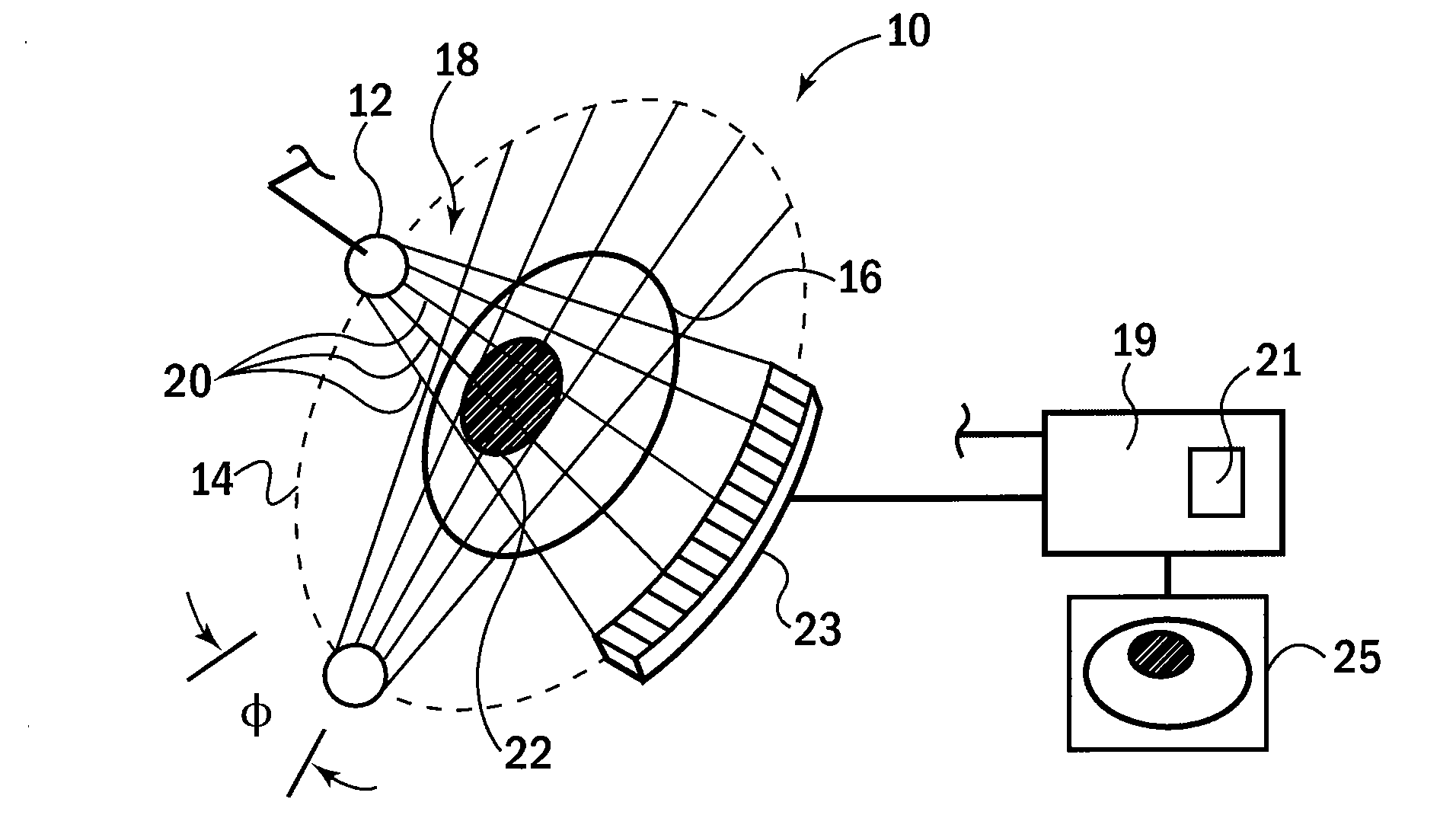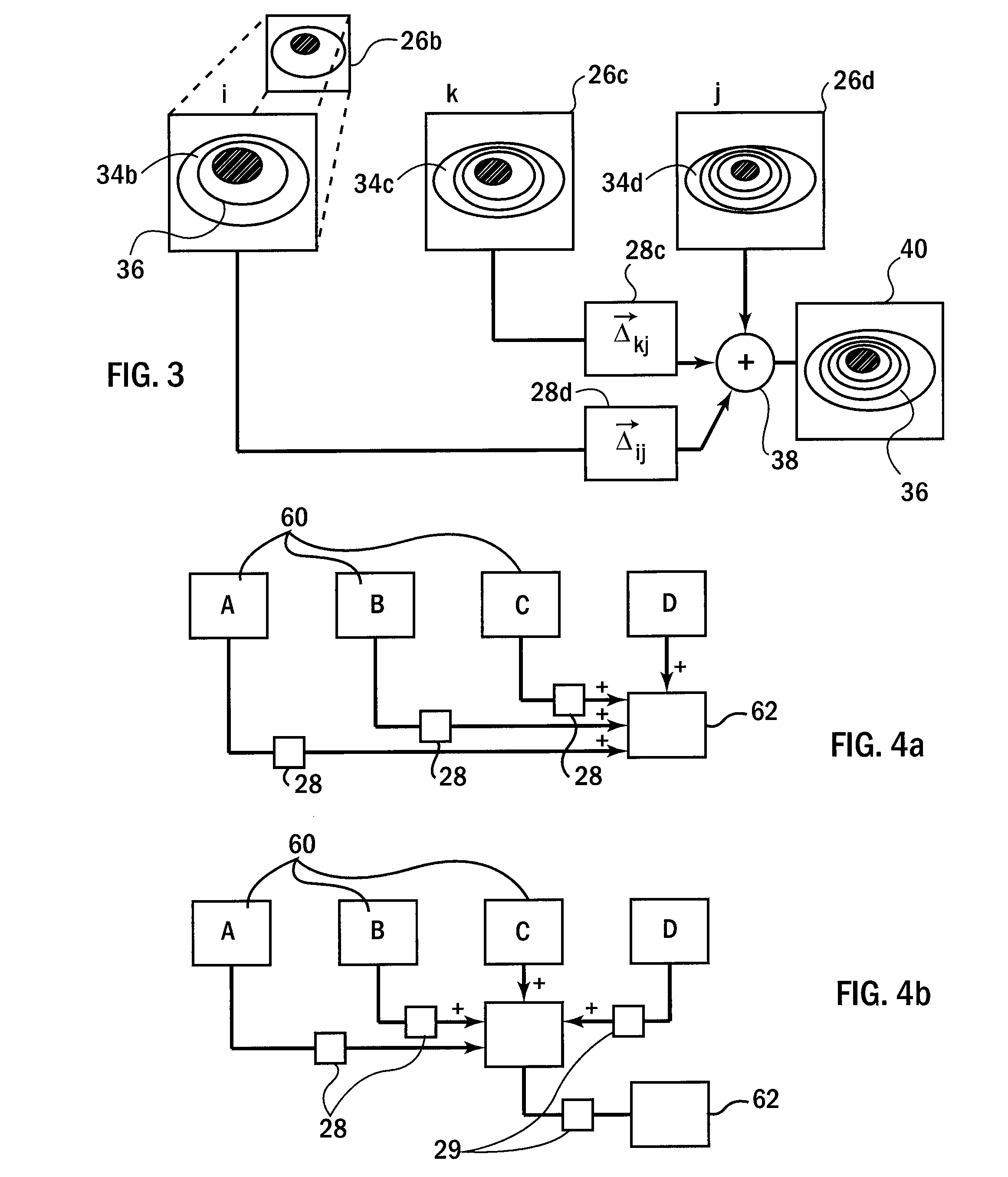Reduction of Transitivity Errors in Radiotherapy Image Registration
a radiation therapy and image registration technology, applied in the field of radiation therapy, can solve the problems of reducing the ability of cancer cells, increasing the reproduction rate of cancer cells, and more frequently, and achieve the effect of reducing the inconsistency of the invers
- Summary
- Abstract
- Description
- Claims
- Application Information
AI Technical Summary
Benefits of technology
Problems solved by technology
Method used
Image
Examples
Embodiment Construction
[0043]Referring now to FIG. 1, an example radiation therapy machine 10, suitable for use with the present invention but not limiting the present invention, may provide a radiation source 12 positionable in an orbit 14 about a patient 16 over a range of angles φ. The radiation source 12 may provide an intensity modulated radiation beam 18 comprised, for example, of multiple beamlets 20 which may be individually controlled in intensity by a computer 19 executing a stored program 21.
[0044]During treatment of the patient 16, the intensity of each beamlets 20 is adjusted as a function of the position so of the radiation source 12 to apply radiation dose, preferentially to a tumor region 22. The varying intensities may be controlled according to a treatment plan, for example, held in the computer 19, where the treatment plan may be converted to a “treatment schedule” describing a relationship between intensities of the beamlets 20 as a function of angular position of the radiation source ...
PUM
 Login to View More
Login to View More Abstract
Description
Claims
Application Information
 Login to View More
Login to View More - R&D
- Intellectual Property
- Life Sciences
- Materials
- Tech Scout
- Unparalleled Data Quality
- Higher Quality Content
- 60% Fewer Hallucinations
Browse by: Latest US Patents, China's latest patents, Technical Efficacy Thesaurus, Application Domain, Technology Topic, Popular Technical Reports.
© 2025 PatSnap. All rights reserved.Legal|Privacy policy|Modern Slavery Act Transparency Statement|Sitemap|About US| Contact US: help@patsnap.com



